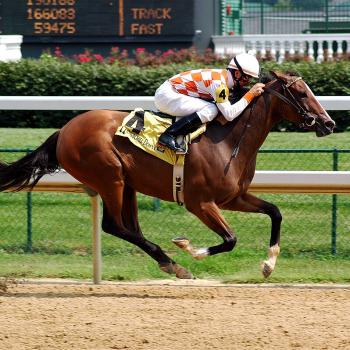This is what qualifies as “light reading” in my world. Nothing on heathcare, or pensions, or other weighty topics — this is the tale of the Beanie Babies and the man who created them, Ty Warner.
You all remember Beanie Babies, right? Here’s an article from Slate that I came across which give a bit of background and a different perspective of the “why” on how the Bubble came to be. My memories are vague — I recall stumbling upon them at a gift shop and thinking, “oh, these must be the toys I was reading about in the paper.” Mom bought a large number of them, though I simply don’t recall if she actually imagined that she was accumulating something of value, or just doing what she does best, buying popular things. (Sorry, Mom.) For a while she would pawn a couple of them at a time on us (that is, the kids) when we visited, until I put my foot down and said, “we already have a whole toy bin full of nothing but stuffed animals.” (She also had a basket full of the cheap stuffed animals from Claw machines, but always said these were dog toys.)
Anyway: what was more interesting was the man himself, who was, from all reports, an a** who mistreated those who loved him and repeatedly stole and took credit for others’ ideas — yet the chain of events was not simply just a set of coincidences or lucky breaks, but began with his fanatical determination to create the best line of stuffed animals, with obsessive attention to detail, from his start selling a stuffed cat at a trade fair, obsessively grooming and trimming the fur to make exactly the right impression. The beanbag element was intended to increase the posability and play value, the sales were limited to gift shops, not big box stores, because he didn’t want the toys just tossed in a bin. The changes he made which resulted in certain early Beanie Babies being “rare”? That was the result of his constant tinkering to improve his product. And the animals were virtually all designed by him, fabric, eye placement, everything, not just left to an employee with the instruction, “create a duck this time” — though as he was doing this he had no idea that he was creating limited editions, they were just the erratic changes of an obsessive man.
Other elements of the craze were not his doing at all: the website and the poems and birthdays were all the creation of an employee. The concept of “retirement,” however unplanned at first, was later used to great effect, and Warner had no inkling that his animals would be transformed from a toy for children to an obsession for adults. The emergence of e-bay was also fortuitous in enabling the cross-country trading, as supply varied from region to region, that contributed to the crazy. A good portion of the initial “scarcity” was just run-of-the-mill supply problems. And there were several key players in the transformation into collectible that he profiles as well.
And Warner today? His days of extraordinary profits are past, but he is still very wealthy (having bought, among other things, hotels, with his cash) and continues to create stuffed animals. He never married, and his two long-term relationships crumbled with anger and resentment. His mother was mentally ill, and his father abused his sister, from whom he is now also estranged. He was convicted of tax evasion in 2013, yet his attorneys at the time argued that he surely wasn’t greedy because he didn’t have a will and hadn’t engaged in any estate planning — but, in reality, he enjoys his money as much as he’s able, in the present, and simply has no one who he loves (and perhaps never had) to bequeath his tremendous wealth to.
Is this the most deeply insightful book you’ll ever read? No. The author is 24 years old, a bit of a wunderkind, as this is his third book. (His first he wrote while a senior in college, about avoiding debt in college, with the basic pitch being “go to a community college and a state school, and ignore the rankings game.) The writing is light and it’s a quick read, but it is deeply researched, with extensive interviews with everyone but Warner himself, whose contribution to the book, as Bissonnette notes, is taht “in no way did he interfere with my reporting for this book.”












